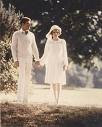
Tuesday, March 23, 2010
Ch. 4-6: What would you have done?
So as not to give anything away, I'll be as vague as possible. I really hope that no one told you how it ends...After you finish the novel, respond to the ending. Was it the right thing to do? What would you have done? Were there other alternatives? Why do you think it happens this way? What is Steinbeck's message? Hmmm. I know that we'll have lots to talk about on Thursday. A fulmination may erupt in response to the controversial conclusion. Complete a log/blog for Thursday's discussion, then we'll take the test on Friday. There's a trial sort of thing that we'll start on Monday. I'd tell you more, but it will ruin the ending if you're not there yet.
Thursday, March 18, 2010
Of Mice and Men: Chapters 1-3
First, just a bit of background about the novel. Since Steinbeck is considered to be one of America's best Naturalist writers, we should probably briefly cover some characteristics of Naturalism.
*Although our class is highly poetic, Naturalism is not. The prose focuses less on imagery and more on explanations and details. While some of the novel includes metaphors and similes (especially at the beginnings of some chapters), most of the novel is free of poetic devices.
*Explores sociological conditions in a mostly objective manner (instead of focusing on the beauty of the language)
*Explores conflicts between the social classes, especially the exploitation of workers by those in power. Watch for examples of exploitation on the ranch as well as illustration of larger social issues happening in the 1930s within the novel.
*Creates stories in which the reader is an observor in the story. Many characters strive for the American Dream.
*Focuses on an occupation or trade. In the case in Of Mice and Men, Steinbeck's story also documents the lives of migrant workers in the 1930s.As far as the genre is concerned, Of Mice and Men is written as a play-novel, or a mixture of both. Each of the six chapters is an extended episode- the action takes place in one scene and begins with a description of that scene.
Characters also exit and enter with what seems like stage directions. Also, you've probably noticed the large amount of dialogue.For your reader's blog, mention at least three key events that have struck you so far. Do you notice any possible foreshadowing? Steinbeck is a master of this! Also, what kinds of animal imagery is associated with Lennie? Crooks? (If you read chapter 4 already.) Why does Steinbeck describe these characters in animal terms? What's the effect and purpose? Other than that, please include your thoughts, ideas, interpretations so far. Raise questions to the class if you'd like as well.
*Although our class is highly poetic, Naturalism is not. The prose focuses less on imagery and more on explanations and details. While some of the novel includes metaphors and similes (especially at the beginnings of some chapters), most of the novel is free of poetic devices.
*Explores sociological conditions in a mostly objective manner (instead of focusing on the beauty of the language)
*Explores conflicts between the social classes, especially the exploitation of workers by those in power. Watch for examples of exploitation on the ranch as well as illustration of larger social issues happening in the 1930s within the novel.
*Creates stories in which the reader is an observor in the story. Many characters strive for the American Dream.
*Focuses on an occupation or trade. In the case in Of Mice and Men, Steinbeck's story also documents the lives of migrant workers in the 1930s.As far as the genre is concerned, Of Mice and Men is written as a play-novel, or a mixture of both. Each of the six chapters is an extended episode- the action takes place in one scene and begins with a description of that scene.
Characters also exit and enter with what seems like stage directions. Also, you've probably noticed the large amount of dialogue.For your reader's blog, mention at least three key events that have struck you so far. Do you notice any possible foreshadowing? Steinbeck is a master of this! Also, what kinds of animal imagery is associated with Lennie? Crooks? (If you read chapter 4 already.) Why does Steinbeck describe these characters in animal terms? What's the effect and purpose? Other than that, please include your thoughts, ideas, interpretations so far. Raise questions to the class if you'd like as well.
Subscribe to:
Posts (Atom)










